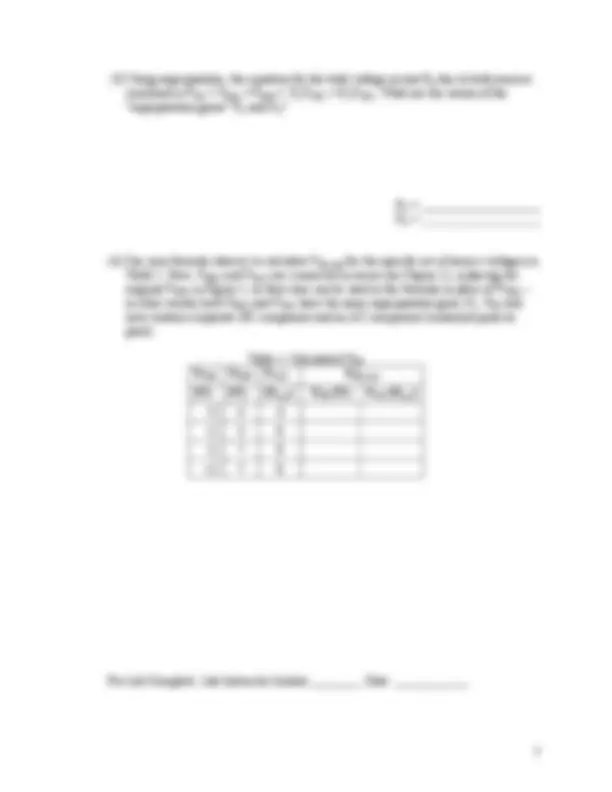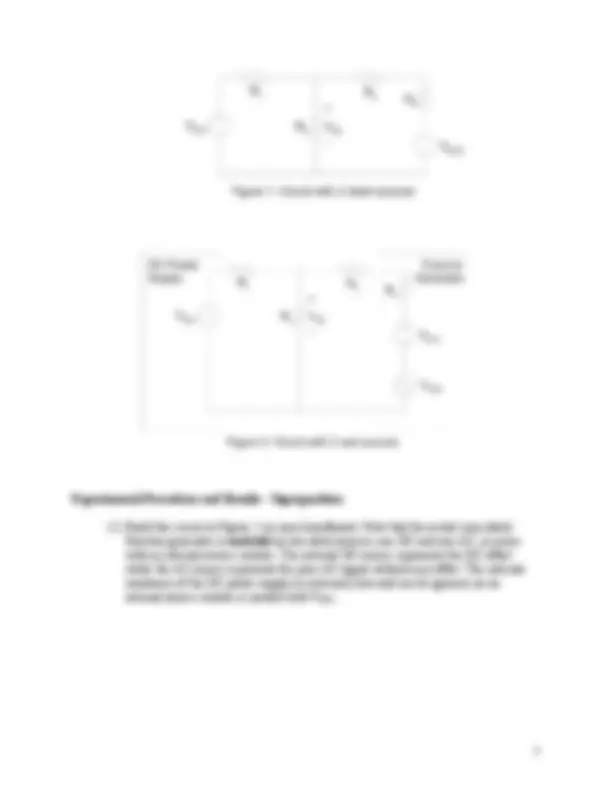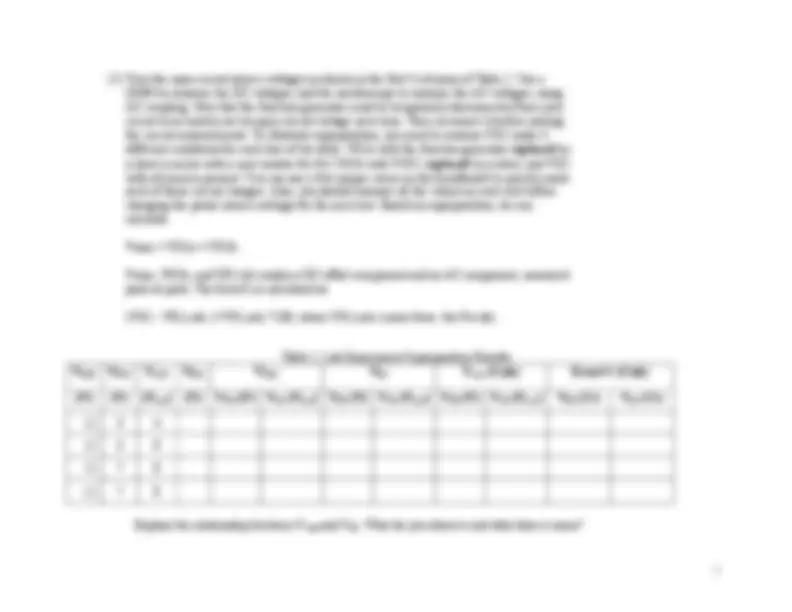





Study with the several resources on Docsity

Earn points by helping other students or get them with a premium plan


Prepare for your exams
Study with the several resources on Docsity

Earn points to download
Earn points by helping other students or get them with a premium plan
Community
Ask the community for help and clear up your study doubts
Discover the best universities in your country according to Docsity users
Free resources
Download our free guides on studying techniques, anxiety management strategies, and thesis advice from Docsity tutors
Material Type: Lab; Professor: Haggard; Class: Intro to ECE; Subject: ECE Elect & Computer Engr; University: Tennessee Tech University; Term: Spring 2000;
Typology: Lab Reports
1 / 5

This page cannot be seen from the preview
Don't miss anything!




General Notes:
Objectives: The purpose of this lab is to illustrate and verify the important circuit analysis concept of superposition. After completion of this lab, you should:
(1) Have a good understanding of the principle of superposition (2) Have a better understanding of oscilloscope measurement techniques. (3) Have more experience with AC signals and the function generator. (4) Understand the difference between an ideal and real voltage source.
Introduction One of the best techniques for solving electrical circuits is using the principle of superposition. The principle of superposition allows us to reduce a complicated problem with multiple independent voltage and/or current sources to several easier problems, each containing only one independent source. Superposition says: In any linear circuit containing multiple independent sources, the current or voltage at any point in the network may be calculated as the algebraic sum of the individual contributions of each source acting alone. When determining the contribution due to an independent source, any remaining voltage sources are made zero by short-circuiting them, and any remaining current sources are made zero by open-circuiting them; however, dependent sources are not made zero and remain in the circuit. In this lab experiment, we will illustrate the validity of superposition by building a resistive circuit with three independent voltage sources (two DC and one AC) and taking measurements to show that the total voltage at any point in the circuit is the sum of the voltages produced by each source acting alone. The equipment used in the experiment includes a DC power supply, a function generator, an oscilloscope, and a multimeter.
Pre-Lab - Superposition Perform the following exercises before coming to the lab to do the experiment. You will not be allowed to work on the experiment until the pre-lab has been completed.
(1) Throughout the Pre-lab and Experiment on superposition, use resistor values of R 1 = 10 kΩ, R 2 = 6.8 kΩ, R 3 = 5.6 kΩ, R 4 = 50 Ω. Using Figure 1, compute the voltage across R 2 due to the source VDC1 alone, by replacing VDC2 with a short-circuit and solving the circuit equations. Draw this modified circuit. Show your work.
VR2a =
(2) Again using Figure 1, compute the voltage across R 2 due to the source VDC2 alone, by replacing VDC1 with a short-circuit and solving the circuit equations. Draw this modified circuit. Show your work.
VR2b =
Experimental Procedure and Results - Superposition
(1) Build the circuit in Figure 2 on your breadboard. Note that the actual (non-ideal) function generator is modeled as two ideal sources, one DC and one AC, in series with an internal source resistor. The internal DC source represents the DC offset while the AC source represents the pure AC signal without any offset. The internal resistance of the DC power supply is extremely low and can be ignored, so no internal source resistor is needed with VDC1.
(2) Vary the open-circuit source voltages as shown in the first 3 columns of Table 2. Use a
DMM to measure the DC voltages, and the oscilloscope to measure the AC voltages, usingAC coupling. Note that the function generator must be temporarily disconnected from yourcircuit to accurately set its open-circuit voltage each time. Then reconnect it before makingthe circuit measurements. To illustrate superposition, you need to measure VR2 under 3different conditions for each line of the table: VR2a with the function generator
replaced
by
a short in series with a new resistor for R4; VR2b with VDC
replaced
by a short; and VR
with all sources present. You can use a few jumper wires on the breadboard to quickly makeeach of these circuit changes. Also, you should measure all the values on each row beforechanging the power source settings for the next row. Based on superposition, we cancalculateVsum = VR2a + VR2b .Vsum, VR2b, and VR2 all contain a DC offset component and an AC component, measuredpeak-to-peak. The Error% is calculated as(VR2 - VR2,calc )/ VR2,calc *100, where VR2,calc comes from the Pre-lab.
Table 2: Lab Experiment Superposition Results
V
DC
DC
AC
R2a
R2b
R
sum
(Calc)
Error% (Calc)
p-p
DC
AC
p-p
DC
AC
p-p
DC
AC
p-p
DC
AC
Explain the relationship between V
sum
and V
R
. What do you observe and what does it mean?
5